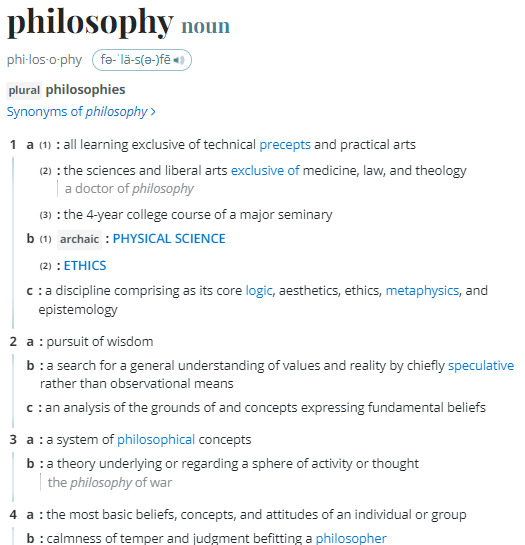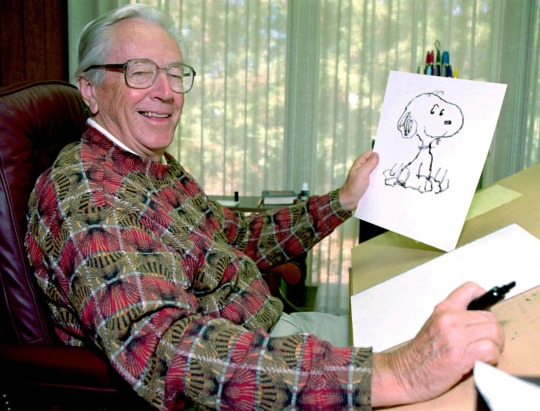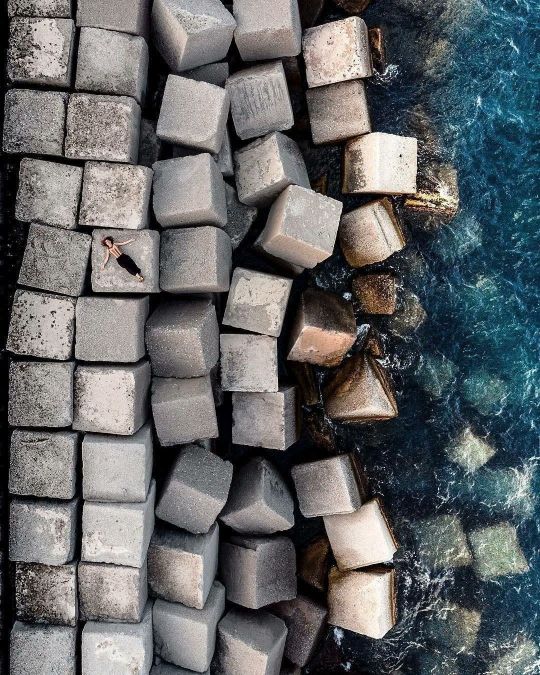#michael schulz
Explore tagged Tumblr posts
Text
Mikey Way: “I was borderline terrified a lot of the time My Chemical Romance was active. I was learning the bass in front of 20,000 people every night!”
By Gregory Adams ( Bass Player ) published June 9th 2023
The reunited emo kings’ low-end ranger reveals why he swapped out his signature Fender Mustang for a sparkling new signature Jazz Bass, learning bass in arenas, and how he overcame insecurity about his chops
Full interview under cut:
My Chemical Romance’s reunion has seen bassist Mikey Way thrumming through the high pomp punk of The Black Parade and Three Cheers for Sweet Revenge favorites with a familiar rhythmic fortitude, but keen-eyed band obsessives have probably noticed the musician is no longer sporting the snazzy, silver-flake Squier Mustang signature model Fender built for him back in 2012.
The good news is that’s because, as Fender have just formally announced, Way has a brand-new – but just as glammy – Jazz Bass out now. There’s a good reason why Way’s made the switch: the Jazz Bass is his first love.
Though he started out on guitar, Way got the hang of a four-string in the mid ‘90s while playing a loaned-out Jazz Bass in his pre-My Chemical Romance project, Ray Gun Jones. He upgraded to a silver-finish Jazz of his own by the time MCR started touring in the early ‘00s, but a trailer mishap led to that instrument getting smashed to pieces on a highway.
Way tells Guitar World that he eventually became obsessed with the short-scale sturdiness of a Mustang bass guitar as My Chemical Romance were writing their 2010 full-length, Danger Days: The True Lives of the Fabulous Killjoys, after fooling around with a model Duff McKagan had left at North Hollywood’s Mates Rehearsal Studio. By 2012, Way had his Squier model in stores.
It was during the downtime after My Chemical Romance went on hiatus in 2013, though, that the stubbiness of his Mustang became a little hard to handle.
“I stayed away from playing bass for a little while, which is natural – I was just decompressing,” Way explains. “Then, sometime in 2014, I picked up the bass again, to get my chops back, [but] I noticed that the Mustang felt strange to me.”
After reaching out to the folks at Fender, Way got a grip on his playing by stretching out on the longer-necked Jazzes they sent him. Way’s take on the Jazz Bass is outfitted with ’70s-style single-coil pickups, and a thinline “C”-shaped maple neck the bassist says is super-speedy.
The finish is silver, of course, but Way also wanted an aesthetically inkier black pickguard. The headstock, likewise, pops with its matching gloss-black finish.
Speaking with Guitar World, Way gets into the glam and grunge gods who inspired his love of a good sparkle coat, overcoming performance anxiety, and why a steady attack wins the bass race every time.
What were some of the musts when it came to designing this latest signature?
“I’ve been obsessed with the sparkle finish as far back as I can remember. Growing up in the ‘90s, the silver-flake [finish] was big in alternative music. Chris Cornell had the Gretsch Silver Jet, [Daniel Johns] from Silverchair had one – [with] the imagery the Smashing Pumpkins used, they liked sparkles.
“Ace Frehley, of course, was big into flake finishes, and as a kid, you love the larger-than-life, comic book world of Kiss. [And there’s] David Bowie – the glam rock stuff. That flake finish makes me think of so many different things, but that’s why I love it so much.
“I remember being younger and going into stores and seeing a flake finish and being like, 'Oh my god, that’s an expensive [looking guitar] – I can’t afford that, let alone play it.' It was almost intimidating.”
One aesthetic difference between your Mustang model and this Jazz is that you didn’t throw a racing stripe on this one.
“I thought about bringing it back and keeping the continuity. Maybe somewhere down the line we’ll throw a racing stripe on this. The thing with [seeing a] racing stripe was always like, 'This player is a badass!'”
Is there a psychology behind removing the racing stripe, then?
“The psychology behind it is that I forgot about it. When My Chemical Romance was talking about doing reunion shows [in 2019], I’d contacted Michael Schulz from Fender and was like, 'Is it OK if I make a new bass for this [next] era of My Chemical Romance?' I wanted to take my past and bring it to the future – taking my Mustang and melding it with the Jazz Basses that I loved so much.
“I tried to have my cake and eat it, too. I wanted the thinner neck, and I wanted the silver-flake, but I wanted it on a Jazz Bass. They knocked it out of the park immediately.”
Getting back to how you used to admire those silver-flake guitars in the shops, you actually started out as a guitarist, right?
“So, the story goes that my brother [My Chemical Romance vocalist Gerard Way] had a Sears acoustic guitar when he was 10 years old. We would take a shoelace and make a strap, and we would stand on the couch pretending we were in Iron Maiden. And then it got real around ’93-’94, which lines up with the rise of alternative music. You started to see people that looked exactly like you, and they were playing guitar. They were playing Fender Strats!
“My brother got a Mexican Stratocaster, Lake Placid Blue. I found it not too long ago, and Michael from Fender hot-rodded it. That’s how I cut my teeth – that Mexican Stratocaster [was] my first foray into really trying to learn how to play guitar. I would watch bootlegs of concerts, and watch [guitarists’] hands and fingers – Thom Yorke, Billy Corgan, Noel Gallagher, Jonny Greenwood. I would watch what they were doing. It all started from that.
“Bass came out of necessity, twice. Me and my brother had a band called Ray Gun Jones, I guess in ’95-’96. It was kind of Weezer-ish, or us doing a surf-punk thing [with] a little bit of pre-mid-west emo. At the time we were really into Weezer, Jawbreaker, Promise Ring, Smashing Pumpkins, Nirvana, Sunny Day Real Estate.
“[Ray Gun Jones] needed a bass player, so my brother was like 'Hey, do you want to play bass for my band?' I was already a huge fan – I’d always tag along to practices. The ex-bass player let me borrow their bass. We had 4-5 songs, and I got the rudimentary from that. In that era, everyone was like, 'I want to be a guitar hero,' but I realized I had a natural knack for [bass]. I picked it up right away.
“Then, with My Chemical Romance, it was the same thing. My brother was like, 'We need a bass player,' and I was like, 'Well, this is familiar' [laughs]. 'Here’s the demo; learn these songs.' They weren’t terribly difficult.”
Was that bass you had borrowed a Fender Jazz?
“Yup, I’ve only ever played Fender. I’ve tried tons of other basses from other companies, but it always feels alien to me.”
You mentioned studying the playing of Thom Yorke or Billy Corgan through those bootleg vids. Were there any bassists that you treated similarly, to understand the mechanics of bass?
“Matt Sharp from Weezer. I tried to ape him in the beginning, but my attack sounds vaguely reminiscent of a Smashing Pumpkins recording. I would learn Siamese Dream and Melon Collie and the Infinite Sadness, and the Blue Album [the band’s 1994 self-titled debut] by Weezer. Those were the three albums that I put the most time into learning. That’s in my DNA.”
How about from a hyper-local perspective. If My Chemical Romance started out playing New Jersey basements and VFW halls, where there any bassists from that scene that inspired you, or that you appreciated?
“Yes! We shared a rehearsal space with this band called Pencey Prep – that was [MCR guitarist] Frank Iero’s original band. John McGuire was their bassist, and he let me borrow his equipment all the time. He taught me fundamentals, and gave me pointers – he taught me a whole heck of a lot.
“I always respected Tim Payne from Thursday, I loved his attack and stage presence. And when I’d watch Gabe Saporta from Midtown, I thought 'This dude is the coolest guy in the room.' He’s got this calm, cool, and collected [presence] that you can’t fake or learn. And then Eben D’amico from Saves the Day – brilliant!
“I would try to learn Saves the Day basslines. They were pretty complex [compared to] what most bands were doing in that scene. Most bands in the post-hardcore scene had simplistic basslines, but Saves the Day did not.
“There’s also Ray Toro, the guitar player of My Chemical Romance. Not only is he truly gifted at guitar, but he’s truly gifted at bass and drums – Ray can do everything. He was instrumental, early on, with showing me the ropes. Ray gave me lessons when I was a novice. I can’t thank him enough for that.”
What kind of pointers was he giving you?
“He showed me proper fretting, or [how to maintain] a steady attack. I got a really great compliment from our front-of-house guy, Jay Rigby. He told me that I’m one of the very few bass players that he doesn’t have to go in and tweak the volume [for]. 'You’re steady, throughout.' I think that’s something that Ray Toro instilled in me: the consistency of attack.
“It’s funny thinking about it, but I was such a novice going into My Chemical Romance that I would bring myself into an anxiety-ridden state of, 'Oh my god, we have a show tonight; I have to start practicing right now.' I would be practicing four to five hours before we played – I’d play the set [in the green room], and then I’d play it again. Other bands would be like, 'What are you doing?' I was so neurotic at that point, because there were so many people around me that were beyond gifted.
“I got pushed into the deep end; you’ve got no choice but to figure it out. Ray and Frank are so gifted that I had to keep up. I didn’t want to ever do the music a disservice.
“That brings me back to the simplicity of the early My Chem basslines. The first album [2002’s I Brought You Bullets, You Brought Me Your Love] was me learning the bass, and somehow [producer] John Naclerio recorded me and said, 'You did a great job,' which I did not expect.
“I thought I was going to go in there and they were going to have to do some studio magic, or someone would come in and play [my] part. I thought of the worst-case scenario, but I went in and did it. I played the bass seriously [enough] by that point.”
What are you generally looking for in a My Chemical Romance bassline?
“What makes it for me is if I do a fill, I’ll only do it once. If you listen to [the band's 2022 comeback single] The Foundations of Decay, any fill on there I only do one time. What’s interesting about The Foundations of Decay is that it’s very loose and run-and-gun. We went in and punched things in for timing, which everyone in the world does, but the meat of that is first-or-second take. Which brings me to someone else who was very instrumental to my bass playing: Doug McKean.
“He’s no longer with us, unfortunately, but he was our engineer from The Black Parade [until his passing in 2022]. He was always a huge cheerleader for me – he instilled confidence in me. He was always good at getting a killer performance out of me.”
What are some of the biggest My Chemical Romance bass moments for you?
“I’ll say that fill in on Foundations. No-one saw that coming.”
There’s a YouTube video out there of someone playing their favorite Mikey Way basslines, some while using your signature Squier Mustang, but one standout in particular is The Black Parade’s The Sharpest Lives.
“What’s funny is Sharpest Lives has a bass solo, and I was terrified of it. I had performance anxiety [through] the 12 years before we broke up – I don’t have it anymore. Somehow when the band got back together, a switch in my brain [got] flipped. [But] while My Chem was active, I was borderline terrified a lot of the time.
“I’m playing with people far above my skill level, I’m playing [on bills] with bands where their bass players are way better than me, [and] our shows were getting massive. We were playing arenas! So not only are you learning the bass, but you’re learning the bass in front of 20,000 people every night. It made me tweak a little, but I think it shaped me into what I became.
“That solo gave me anxiety. It was when we were playing the biggest venues of our career, and it would break for the solo [Way starts singing his ascending bass lick]. I practiced it relentlessly, then it [became] second nature. Later on, it [became my favorite part of the show.”
You’re already playing the Jazz signature in your live show, yeah?
“It’s what I use for the live show. Basically, Fender built [it] for the reunion, and then we made a couple tweaks for when we release it.”
Was there a learning curve at all towards transferring My Chemical Romance songs you’d written on a Mustang onto the Jazz?
“There was Planetary (GO!), a song off Danger Days. I’d guess you’d say the whole thing is a disco beat. It’s dance-y – [Mikey starts singing an octave-popping bassline], I do that for the entirety of the song. I was very happy that I only had to do that on a Mustang, initially [because of the shorter scale]. But going back to what I said, [after] I took a little break, [I] went back to a Jazz Bass.
“I missed the room, or the way my hand went up and down the neck. I wanted to go back to that, so I jumped back in and felt right at home again.”
How many Jazzes are you bringing on the road?
“I bring two basses out, [but] I stopped even switching [during the set]. This is a testament to Fender craftsmanship – that thing stays in tune. It’s got the four-saddle bridge, and it stays in tune so well. I’m a little neurotic so I’ll tune every few songs, but if I went five to six songs you probably wouldn’t even notice.”
What does it mean to you to now have a fully-formed Fender signature model – as opposed to the Squier – and with the body shape you began your career with?
“It’s really a dream come true. It’s funny, in 2002-3 we started touring across the country. I had a Mexican Jazz Bass, but [the band] were like, 'You have to use something with better electronics; better wood. Step it up!' So, I went into the Guitar Center on Route 46 in New Jersey, and at the time Fender had released a special Guitar Center edition that was silver-flake.
“It always bugged me that the pickguard was white – it threw me off, aesthetically, and I was like, 'I’m going to change that pickguard one day.' So, I got that, and I was using that for a while.
“We were out with [Boston emo quartet] Piebald – it was one of our first cross-country tours ever – and one night someone forgot to close the trailer door. We’re driving on the highway, and half the contents spilled out – unfortunately, my bass was a casualty of that.
“But Frank Iero, and his heart of gold, jumped out on the highway in the middle of the night and tried to recover [the bass]. He was like, 'Maybe we can fix it!' I’ll never forget him doing that. He got a chunk of it – it’s in one of our storage units.”
For more information on the Limited Edition Mikey Way Jazz Bass, head to Fender.com.
#mikey way#gw#fi#rt#whole gang#michael schulz#doug mckean#fender#mcr#return#interview#guitar world#bass player#2023#jun 2023#6/9/23#limited edition jazz bass#the foundations of decay#song: the foundations of decay#the sharpest lives#song: the sharpest lives#planetary (go!)#song: planetary (go!)#text#originals
480 notes
·
View notes
Text
on the song violet;

the mike he is referring to is mike schulz, he is a fender rep and a close friend of gerard. think the coffee date post with gerard kissing his cheek.
he gifts frank with a lot of guitars and gear, and frank gives him shout outs on instagram.

here’s frank starting the lyrics off for the song even if they weren’t used, but still thought about them throughout. hmm.

using my chem and coheed as inspo is interesting to me

“did you get what you deserve” are lyrics found in both dead and cemetery drive. and anthony just said he was listening to my chem for inspo and his contribution is the lyrics. but sure, some pop song you don’t remember.
you’re going to get what you deserve is a good response to that openended did you get what you deserve.
18 notes
·
View notes
Text
my favorite creepy deliveries of "you try my patience," ordered to become increasingly more unhinged
#phantom of the opera#davis gaines#scott davies#michael nicholson#thomas schulze#ayanga#brad little#david thaxton#petter karrie#video#edit
252 notes
·
View notes
Text










STAR TREK: THE NEXT GENERATION // S4E19 The Nth Degree I've finally become the person I've always wanted to be. Do we have to ask why?
#trekedit#star trek#star trek the next generation#reg barclay#geordi la forge#jean-luc picard#william riker#deanna troi#data#worf#star trek*#tng*#tng 4x19#barclay*#geordi*#picard*#riker*#deanna*#data*#worf*#dwight schulz#levar burton#patrick stewart#jonathan frakes#marina sirtis#brent spiner#michael dorn#my gifs
94 notes
·
View notes
Text

#meme#mattsmemes#memes that make you go hmmm#perfection#look#look up#in the sky#its a bird#it's a bird#its a plane#it's a plane#no#lucy in the sky with diamonds#lucy#sky#diamonds#peanuts#charles schulz#this meme is perfection#love this#love this so much#diamond#the beatles#beatles#superman#michael o'donoghue#lucy van pelt
18 notes
·
View notes
Text
Let's Read Peanuts (You WILL believe an unremarkable white boy can become president) – May 1958
There are lots of great strips I just don't have room to comment on. I strongly encourage everybody to read the full month at the official GoComics page. Today's month starts HERE.
May 2, 1958

Well. This one sure… aged, didn’t it?
May 3, 1958

They have such an insanely interesting relationship.
May 4, 1958

Did Schulz get to the end of this comic and fall down a rabbit hole while drawing Charlie Brown’s blanket? Or did he wake up at 3am with a vision of that pattern from God and then proceeded to write an entire Sunday strip to justify drawing it? Tragically, we can never know for sure.
May 7, 1958

I call this storyline “I saw my dog do a funny thing this morning and now it’s your problem for the rest of the week/next several decades.”
May 16, 1958

Was he… actually flying?
May 18, 1958

Another strip of people yelling at stuff off screen. You know what that means.

(Again, that's Uncle Michael from Blind Alley. I will never get tired of that drawing)
May 25, 1958

~An insanely gifted player on your team makes an amazing catch while actively fighting a dog~
Charlie Brown: "Life sucks. Why is my job so hard???"
May 30, 1958

In my head-canon he’s not making a joke here. Charlie Brown is literally a Beatnik and after this conversation he snuck into a jazz club where he read three hours of spoken word poetry about the crushing conformity of modern society while ripped on bennies.
#peanuts#comics#charles schulz#comic strips#lets read#peanuts comics#charlie brown#snoopy#Linus#Lucy#Uncle Michael
10 notes
·
View notes
Text










My albums selection for the next week:
Jac Berrocal + David Fenech + Vincent Epplay – Broken Allures
Klaus Schulze – Moondawn
Michael Ranta, Takehisa Kosugi - Multiple Musics
Arthur Bull + Daniel Heïkalo – Dérapages A Cordes
Negativland – Free
Harvestman – Lashing The Rye
Delphine Dora - Back to the past
Kris Vanderstraeten, Daniel Duchamp, Luis Ferin, Timo van Luijk - Traces du Hasard
The Necks - Bleed
Deficients – Deficients
#musical selection#jac berrocal#klaus schulze#michael ranta#takehisa kosugi#arthur bull#daniel heikalo#negativland#harvestman#steve von till#delphine dora#timo van luijk#the necks#deficients#ambiant music#free improvisation#krautrock#experimental#experimental music#guitar#guitar improvisation#art rock
5 notes
·
View notes
Text

BEHOLD!
PHILOSOPHERS!








#off topic#philosophy#memes#text post#pee wee herman#steve irwin#charles schulz#peanuts#snoopy#charlie brown#peanuts comics#mewtwo#pokemon#just fucking watch pokemon the first movie and youll see what i mean#mister rogers#fred rogers#goku#son goku#dragon ball#dragon ball z#dbz#robin williams#nanu nanu#vsauce#hi vsauce michael here#philosophers#humor#comedians
8 notes
·
View notes
Text
Help!For Japan 2012. I've written several times on Instagram and Facebook, but I only discovered FAIR WARNING in January this year.
Why now? You might ask.
The reason for this was that music was not particularly important in my life.
・・・・Until I heard FAIR WARNING.
So I also learnt this year that Tommy Heart organised a charity for Japan and released this song with other artists just after the Great East Japan Earthquake 13 years ago.
Osaka, where I live, was not affected at this time.
But I have experienced a fire once.
At that time I was helped by my neighbours and was very moved by the help I received from others.
Disasters are very frightening and not something I want to experience too often.
However, it is in these times that we can help each other, strengthen our bonds with others and feel grateful to them.
We Japanese were very happy to have been helped and encouraged by Tommy Heart and the other artists who participated.
It's long overdue, but I made this video to thank Tommy and all the wonderful artists who took part in this charity.

Original Song by Jaded Heart
youtube
(thank you to Mr.P.F for teaching me this.)
Video editing by @shinsui_f_works
#FAIR WARNING#Don Airey#Leo Leoni#Neil Murray#Hena Habegger#Tobias Sammet#Bob Catley#Andi Deris#Torstein Flakne#Marc Storace#David Readman#Claus Lessmann#Oliver Hartmann#Ralf Scheepers#Bern hardWeiss#Michael Kiske#Tony Mills#Carsten Lizard Schulz#Cede Dupont#Kyoji Yamamoto#Helge Engelke#Roland Grapow#Henny Wolter#Robert R Rodrigo#Kai Swillus#Youtube#adobe photoshop
2 notes
·
View notes
Text





tatort 108: kein kinderspiel, theo mezger 1980
youtube
viva zwei, fast forward 2000: charlotte roche interviews blixa bargeld
#tatort#kein kinderspiel#theo mezger#1980#werner schumacher#frank strecker#angelika bender#karl-heinz von hassel#julia hainzl#michael struebin#friedrich g. beckhaus#wilm roil#werner schulze-erdel#johannes grossmann#dieter eppler#rolf schimpf#ernst specht#morgens um sieben ist die welt noch in ordnung#eraserhead#material#buw#viva zwei#fast forward#2000#charlotte roche#blixa bargeld#silence is sexy#einstürzende neubauten#obst & gemüse oder der kunde ist könig
2 notes
·
View notes
Text


Instagram story by mschulz83
[Jun 6, 2023]
#mikey way#michael schulz#fender#mcr#return#ig#ig story#2023#jun 2023#6/6/23#limited edition jazz bass#photo#originals
23 notes
·
View notes
Text

(09/20/24)
3 notes
·
View notes
Text

Michael Elphick as Private Gerhard Schulz and Ian Richardson as Major Neuheim
Private Schulz (1981)
9 notes
·
View notes
Text
Mit Hand und Verstand: Besuch in der Backstube, Tischgespräche in Kandern
von Wolfgang Abel Unter den unzähligen, meist öffentlich finanzierten Denunzier- und Meldestellen zur Erfassung von Verhalten unterhalb der Strafbarkeitsgrenze fehlt eine Meldestelle zur Erfassung von Bäckereiprodukten unterhalb der Genußgrenze. Tankstellenbrot und halb aufgetautes Krankenhausbrot verletzen zweifellos die Menschenwürde, nur kümmert das keine Meldestelle. Auch keiner der immerhin…
#Backstube Brotbruder Freiburg#Bäcker Michael Schulze#Mit Hand und Verstand#Wolfgang Abel#Wolfgang Abel Brotzeit
1 note
·
View note
Text
Vorstellung der Seereisen 2026 und persönliche Weihnachtsgrüße von Michael Schulze
Die Weihnachtszeit ist eine besondere Gelegenheit für Phoenix Reisen, seinen treuen Gästen nicht nur besinnliche Grüße zu senden, sondern auch exklusive Einblicke in kommende Reisehöhepunkte zu bieten. Im neuesten Video auf dem offiziellen Phoenix Reisen YouTube-Kanal präsentiert Michael Schulze, Direktor Schiffsreisen, gemeinsam mit Susanne von Hopffgarten die spannendsten Kreuzfahrtangebote aus…

View On WordPress
#Antarktis Expeditionsreise#Arktis Expeditionsreise#Expeditionsreisen#Karibik Kreuzfahrt#Kreuzfahrt Highlights#kreuzfahrt news#kreuzfahrten#Michael Schulze#Mittelmeer Kreuzfahrt#nachrichten Kreuzfahrt#phoenix reisen#Phoenix Reisen Video#Seereisen 2026#Themenkreuzfahrten#Weihnachtsgrüße#YouTube Phoenix Reisen
1 note
·
View note
